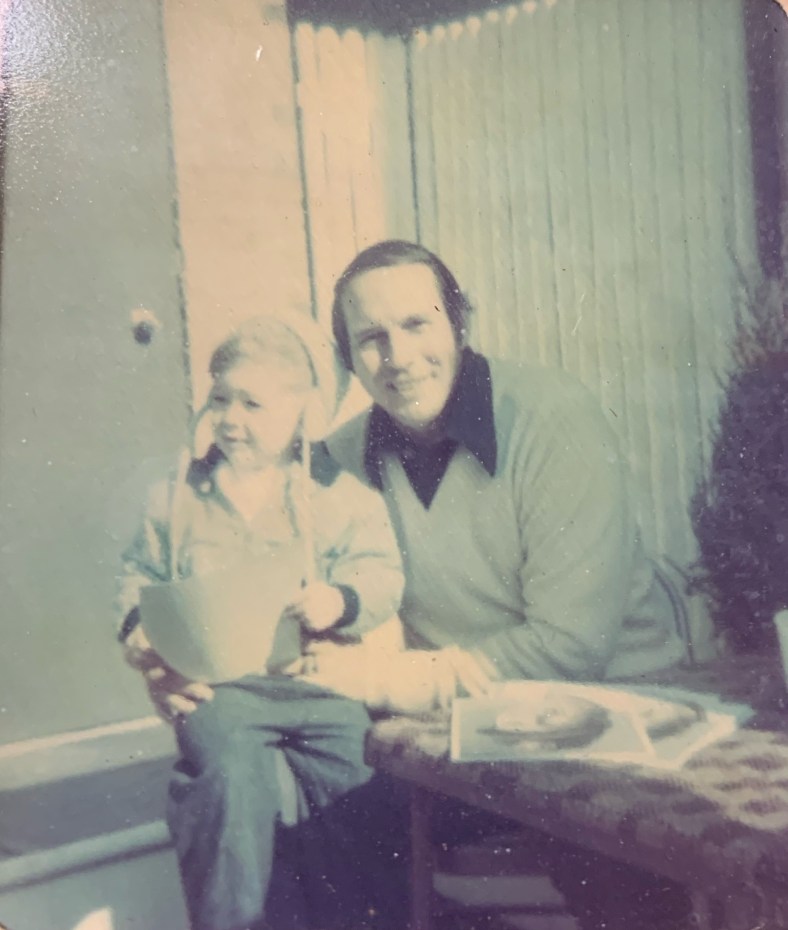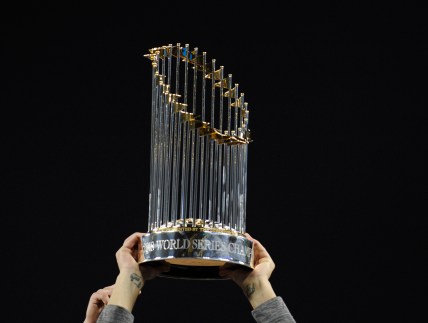
BALTIMORE — Study the photo — if you can squint enough to decipher it.
There’s a man, about 35, sitting at a table, smiling for a camera positioned in front of him. On his right knee, sits a toddler, smack dab in the middle of the Terrible Twos. The boy is looking away, displaying an expression of amusement or fright, which is often the same emotion at that age.
On the table are eight-by-eleven photos of a man in a hat; the boy clutches one in his hands.
This scene occurred in the early 1970s, probably fall, based on the “color” photo, which is now a washed-out blue green. And based on what the two subjects are wearing.
The boy is dressed in a pair of dungarees — they aren’t stylish enough to be called jeans — a jacket and a wool hat with two string pompoms hanging down from the earflaps. The man is wearing a sweater, which probably was cream-colored but now looks bluish, thanks to time and a Fotomat technician. Under the sweater is a dark, buttoned-down dress shirt with collars large enough to successfully land a plane. The man’s brown hair is combed to the side and unapologetically covers both ears.
The photo was snapped at a Crown gas station on Loch Raven Boulevard, about eight miles north of Memorial Stadium in Baltimore, where the Orioles and the Colts made a lifetime of memories for a rabid fan base.
The man in the sweater is Hall of Fame third baseman, “Mr. Oriole” and former Crown Petroleum spokesman Brooks Robinson, who died Tuesday at age 86.
The toddler is me, now a 53-year-old baseball writer who had a piece of his childhood die Tuesday. Baltimore, the Orioles, their fans and Major League Baseball felt a significant loss, too.
Because Robinson wasn’t just a tremendous ballplayer – an 18-time All Star, a 16-time Gold Glover at third base, an American League and World Series MVP – he was simultaneously an ideal and an idol. His humility was legendary as was his authenticity and grace.
Brooks Robinson was everyone’s friend

Family lore has it that after that photo, I would proudly point to Robinson each time he was shown on TV and say, “There’s my friend, Mr. Brooks.”
Years later, as I became a professional sportswriter in my hometown, I interviewed Robinson more than a dozen times for various articles and projects, sometimes at length. He always answered every question in that comforting, Arkansas lilt, never complaining if I had him tied up on the phone for an hour or more. Always thanking me at the end for reminiscing with him.
We never discussed that gas-station photo or how I’d refer to him when I was a boy. I was much too embarrassed/professional to bring that up. Brooks would have gotten a kick out of it, though. And he would have said he was my friend. And that’s not because we were particularly close.
It’s because Brooks was everyone’s friend. Everyone he met. That’s not hyperbole. That was Brooks Calbert Robinson’s goal. To treat everyone as if they were his lifelong pals. The stories are endless. If you met Robinson, you have one. How he took time out of his vacation with his family to talk to you; how he sent you a personal note in his own, swooping handwriting; how he was at your Little League banquet or Eagle Scout presentation. Some seem too outlandish to be true, but they are. Because Robinson was so good. And so true.
Former Orioles great Boog Powell remembers nervously attending his first spring training as an 18-year-old in 1960, arriving with his father at the organization’s complex in Miami. Robinson, who was a ripe 22 at the time, was the first person Powell recognized. Powell introduced himself to the budding star, who then quickly grabbed the hand of Powell’s father and told the man not to worry, that Robinson would personally look after his son. That began a 60-plus-year brotherly relationship or, as Powell once put it, “I’ve worshipped him from Day One.”
‘We name our children after him’
Actor Billy Bob Thornton grew up in Arkansas and idolized Robinson. While attending an Orioles game in the early 2000s, Thornton said he had two prized possessions next to each other on his mantel: his Best Adapted Screenplay Oscar for “Sling Blade,” and a personally inscribed Robinson glove.
The personal inscription was Robinson’s calling card. He was a serial note-writer. If you sent a letter to him, he’d often send you back a handwritten reply. And if your name was Brooks, oh my. You were connected for life.
Late Baltimore sportswriter Gordon Beard is credited with a timeless line that has been paraphrased myriad ways but essentially is: “Around here, nobody’s named a candy bar after Brooks Robinson; we name our children after him.”
It wasn’t just in Baltimore or in the 1960s and 1970s. It’s still happening in the 2000s and in various places in North America. Former NHL player Brooks Laitch, who was born in Saskatchewan, Canada, was named after Robinson. So were former MLB players Brooks Conrad and Brooks Kriske.
Robinson struck up a 20-plus-year friendship with Kriske’s dad through a mutual friend, and ultimately the Hall of Famer attended the boys’ youth, high school and college games on occasion in California. Robinson was thrilled in 2021 when Kriske pitched four games for the Orioles, two decades after the elder Brooks first met the young Brooks.
In 2020, the Orioles threw a “virtual” 83rd birthday party for Robinson, and, besides a collection of organizational greats, the Zoom guest list included nine children named Brooks.
Robinson’s reach stretched far beyond the hot corner at Memorial Stadium or his hometown of Little Rock, Ark., or his adopted hometown of Baltimore or in York, Pa., where he debuted as an 18-year-old professional ballplayer in 1955. There is a statue of him at 5 Brooks Robinson Plaza.
His legacy transcends the 1970 World Series, when he had one of the greatest individual performances in the sport’s championship history, and any other of his on-field exploits.
Brooks Robinson forever will be cherished for not only what he did as a ballplayer, but how he conducted himself as a man. How he connected with everybody.
How he provided everyone he met with their own personal story. And sometimes an old, weathered photo to accompany it.
Dan Connolly is an MLB Insider for Sportsnaut. Follow him on Twitter.
